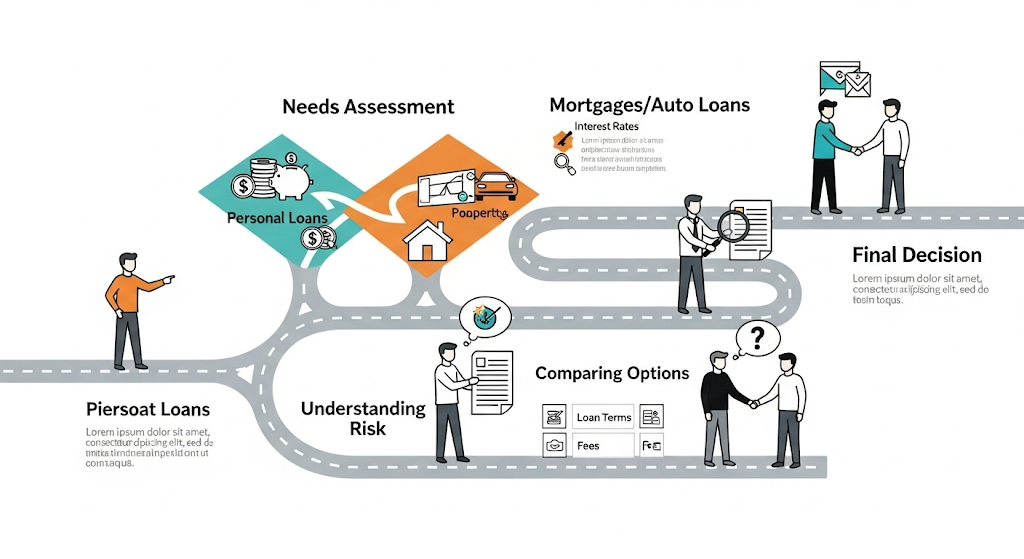
Introduction Navigating student loans can be overwhelming, especially when trying to understand how interest rates affect your overall debt. Interest rates are one of the most critical factors in determining how much you’ll repay over time. This article breaks down the essential components of student loan interest rates in the United States, explains how they’re set, and provides actionable insights to help you make informed financial decisions.
1. What Are Student Loan Interest Rates? Student loan interest rates are the cost of borrowing money from a lender, expressed as a percentage of the loan amount (principal). When you take out a loan, you repay not only the principal but also interest that accrues over time. The interest rate significantly influences your monthly payments and the total repayment amount.
Key Components of Interest Rates:
- Cost of funds: What it costs the lender to obtain money.
- Risk premium: Compensates for the possibility of borrower default.
- Administrative costs: Operational expenses for servicing the loan.
Understanding these components helps you better comprehend why interest rates vary across lenders and loan types.
2. Types of Student Loans in the USA There are two main types of student loans:
A. Federal Student Loans
- Issued by the U.S. Department of Education
- Fixed interest rates
- Income-driven repayment and forgiveness options
- No credit check or cosigner required
B. Private Student Loans
- Offered by banks, credit unions, and online lenders
- Fixed or variable interest rates
- May require good credit or a cosigner
- More flexibility in loan amount and repayment terms
Comparison Tip: Federal loans usually offer more borrower protections, while private loans may fill funding gaps but with more risk and variability.
3. How Federal Student Loan Interest Rates Are Set Federal student loan interest rates are determined annually by Congress and are based on:
- The 10-year Treasury note yield
- A fixed margin added to the Treasury yield
Current Formula (for loans disbursed between July 1, 2022 and June 30, 2023):
- Undergraduate Direct Loans: 10-year Treasury yield + 2.05%
- Graduate Direct Loans: 10-year Treasury yield + 3.60%
- Parent PLUS and Grad PLUS Loans: 10-year Treasury yield + 4.60%
Advantages of Fixed Rates:
- Predictable monthly payments
- Protection against rising interest rates
4. How Private Student Loan Interest Rates Are Set Private lenders set interest rates based on multiple factors:
- Credit score
- Income and employment status
- Debt-to-income ratio
- Loan term and type (fixed vs. variable)
Fixed vs. Variable Rates:
- Fixed rates: Remain the same throughout repayment
- Variable rates: Fluctuate with market conditions (e.g., LIBOR or SOFR index)
Tip: Borrowers with high credit scores and steady income may qualify for significantly lower interest rates.
5. Average Student Loan Interest Rates Federal Loans (2022-2023):
- Undergraduate Direct Loans: ~4.99%
- Graduate Direct Loans: ~6.54%
- PLUS Loans: ~7.54%
Private Loans:
- Fixed rates: ~3% to 14%
- Variable rates: ~1% to 13% (based on creditworthiness)
These averages help you benchmark offers and choose competitive rates.
6. How Interest Rates Affect Total Loan Cost Even a 1% difference in interest can significantly affect your total repayment.
Example:
- $10,000 loan at 5% over 10 years: ~$2,728 in interest
- $10,000 loan at 6% over 10 years: ~$3,322 in interest
That 1% difference equals nearly $600 more in total cost.
7. Federal vs. Private Loans: Choosing Wisely When choosing between federal and private loans, consider:
- Interest rate structure
- Repayment flexibility
- Forgiveness eligibility
- Credit requirements
Recommendation: Always exhaust federal loan options first due to borrower protections and fixed rates.
8. Strategies to Manage Student Loan Interest Rates
A. Opt for Fixed Rates (When Possible)
- Choose fixed-rate loans to ensure stable payments over time.
B. Improve Your Credit Score
- Pay down existing debt
- Avoid late payments
- Reduce credit utilization
C. Consider Refinancing
- If credit improves, refinance for a lower rate (note: federal benefits may be lost)
D. Explore Forgiveness Options
- For federal loans: Public Service Loan Forgiveness (PSLF), Teacher Loan Forgiveness, and IDR forgiveness
E. Make Extra Payments
- Even small extra payments toward principal can reduce total interest over time
9. Loan Interest Rates & Broader Financial Planning Interest rates impact:
- Monthly budget
- Long-term savings
- Ability to invest or buy property
Understanding these impacts can help borrowers plan their financial future more strategically.
10. Extra Insights: Earning Through Blogging About Loans If your blog or site on student loans has Domain Authority (DA) 20+, Domain Rating (DR) 30+, and 5,000+ monthly traffic, you can start receiving guest post offers. Many blogs in this space earn $5,000+ per month from link insertions and sponsored content. All you need is to publish quality, optimized content consistently and respond to outreach requests for backlinks.
Conclusion Understanding student loan interest rates is essential for making informed borrowing and repayment decisions. Whether choosing between federal and private loans or considering refinancing, being educated about how rates are set and what affects them can help you save money and avoid financial stress. With the right knowledge and proactive planning, student loans can become a manageable part of your educational journey and broader financial future.




